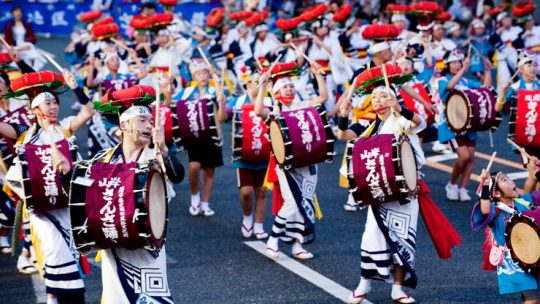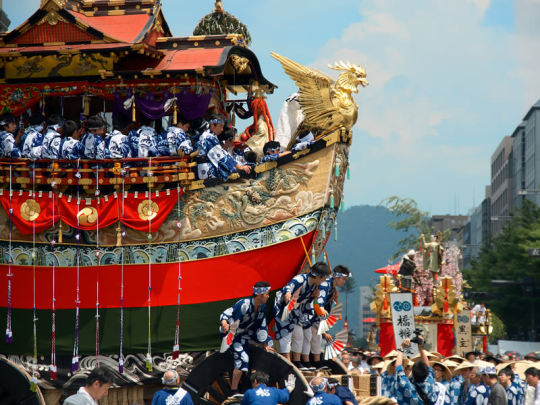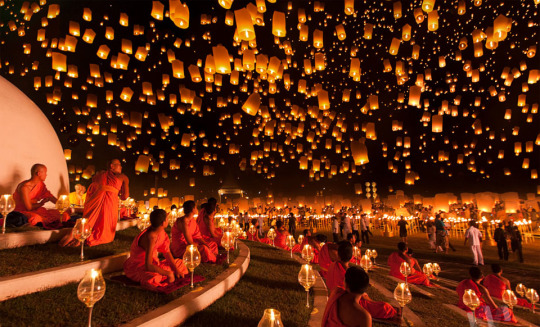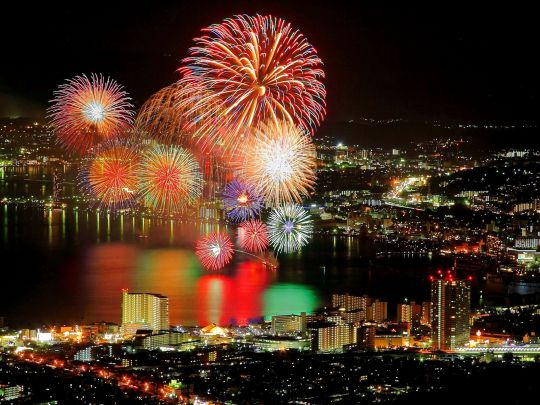#obon festival
“Some people aren’t going to know they’ll miss us until we’re gone.”
– Michael Komai, publisher of Rafu Shimpo
For 113 years, the Rafu Shimpo newspaper has endured. It has devotedly told the story of the Japanese American community in Southern California.
It even survived World War II, despite its writers and editors being forced into incarceration camps. Eldest son Akira Komai took over the paper when his father, Toyosaku Komai, was arrested by the FBI with others labeled “enemy aliens” hours after Japanese planes bombed Pearl Harbor. Just before he, too, was forced to go, Akira hid the newspaper’s Japanese lead type in hopes that the Rafu could one day restart.

Below, you can see the last issue published before they left. There’s a letter to readers on the front page in that April 4, 1942 issue, headlined, “We’ll meet again.” On Jan. 1, 1946, the paper resumed publishing.

Now, there’s one force it might not survive: the economy.
The paper has lost $750,000 over the last three years, and it’s expected to lose $350,000 this year.
Now if the paper doesn’t raise about $500,000 in revenue — by more than doubling its subscribers — it could close in December. This would be the end of one of the last English-Japanese dailies in the U.S. – and the oldest. Rafu Shimpo which literally means Los Angeles newspaper, started in 1903 as a mimeographed sheet put together by three USC students.
To this day, only the Rafu covers every single summer Obon festival, the annual Nisei Week celebration in Little Tokyo, and numerous community events from awards dinners to bazaars. It marks the triumphs and transitions of Japanese Americans in our area, from graduations to deaths.

“Those kind of successes in the community are only going to be here,” said Gwen Muranaka, the paper’s English editor-in-chief.
Times’ reporter Samantha Masunaga recently wrote about the paper’s plight. You can learn more about the community’s response so far and see other front pages in her story.
Photos by Los Angeles Times
Post link

Like India Japan is land of festivals(aka Matsuri). Japan has year long festivals from thanking the god for crops , celebrating sea day, giving thanks to their ancestors to appease the god’s thought to cause fire, floods and earthquakes, mountains, etc. It’s always fruitful to plan a trip to be part of the festival special events
1)Gion Matsuri-The Gion Matsuri gives the chance to see traditional Japanese performances , spectacular festival floats, girls and boys dressed in summer kimono & yukata and Japan’s finest festival food. The highlight of the festival is the dozens of huge festival floats that are pulled through the streets of Kyoto on July 17, the main festival day.

2)Tenjin Matsuri - The Tenjin Matsuri is ranked as one of Japan’s three greatest festivals including Gion Matsuri in Kyoto and Kanda Matsuri in Tokyo. The festival is held at the famous Tenmangu Shrine in Osaka and honors the god of learning.The major part of the festival includes the land procession with portable shrines ,a river procession with festival boats along the Okawa River and spectacular fireworks as night falls.

3)Kanda Matsuri- The Kanda festival is celebrated as a demonstration of prosperity with prime reason being worshipping the god of good harvest and matrimony and the god of fishermen and businessmen.The crowd goes crazy with the start of procession This procession features crowd favorites such as men on horses clad in samurai uniforms, festival floats with characters from popular folk stories and contemporary pop culture, musicians and dancers.

4)Obon Matsuri - The Bon festival, also known as Obon, is usually one of the biggest summer festivals in Japan. Although it’s not an official holiday, most people get about 3 days off during Obon season. At Obon, people honor their dead ancestors through a special type of dance (Bon Odori / Bon Dance) and also take this time to visit the resting places of their dead relatives.

So festivals are integral part of any culture of any country, but what’s so special about Japanese Festivals??
Japanese Food - You have to eat it to believe it…the mouthwatering snack stands at matsuri is people are crazy about! I bet if you can stand in those long queues ofyakitori(grilled chicken in sticks) and karage(fried chicken skewed in stick with a cream dip!! Not to be forgotten the yakisoba more like the desi chowmein all stirred with vegetables and fish(optional).The okunomiyakai sometimes called as Japanese pizza is made up of cabbage /egg/tons of veggies with the topping of green onion,mayo and sweet sauce.You cannot stop at the jagabata stand which the traditional baked potatoes without skin tossed with salt and butter, which you can add as much as your arteries can stand!

Japanese Yukata- Japanese festivals gives you the chance to see beautiful, colourful yukata, which is a causal cotton summer kimono usually worn to festivals in Japan. It is a rare chance to see so many Japanese dressed in this beautiful traditional outfit as well as a fantastic opportunity to join in on the action and dress in a yukata yourself. Yukata are available for rent easily in Tokyo.

Fireworks- “Summer”: The season of fireworks also called as Hanabi has a long history in Japan.Japanese fireworks events (Hanabi) have an electric atmosphere & people dress in tradition yukata and lay mats in the grass for party with friends and family.People go to the firework locations 1-2 hours beforehand to reserve the best viewing location.With the fireworks starting the hooting becomes crazy with people shouting kirei and sugoi(beautiful/splendid) with beer cans and recording cameras in hand!!

The feel and rush of excitement of Japanese Festivals is something cannot be described in words…you have to be here to feel it!!
Interested in knowing more? Contact us right away: http://ghumojapan.com/


